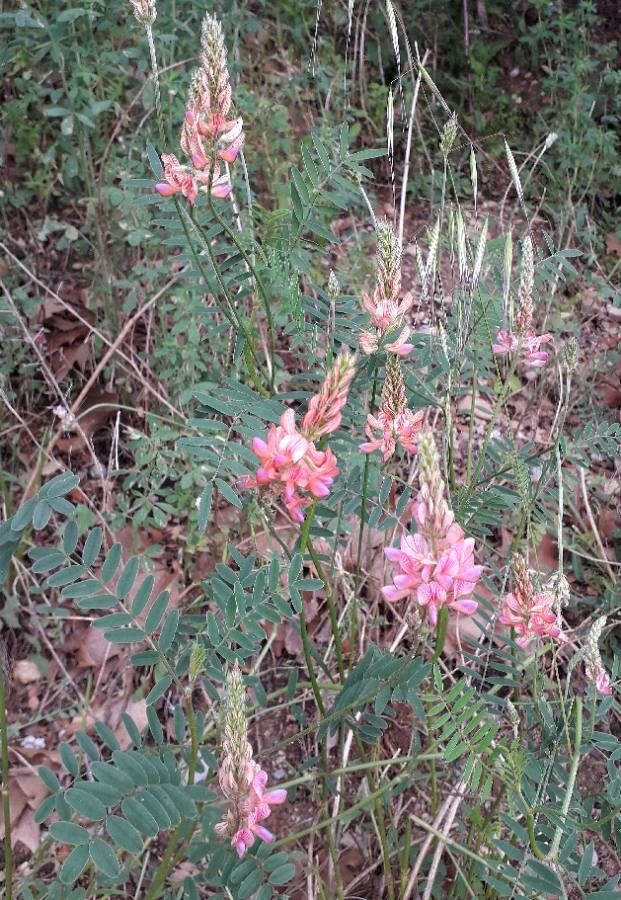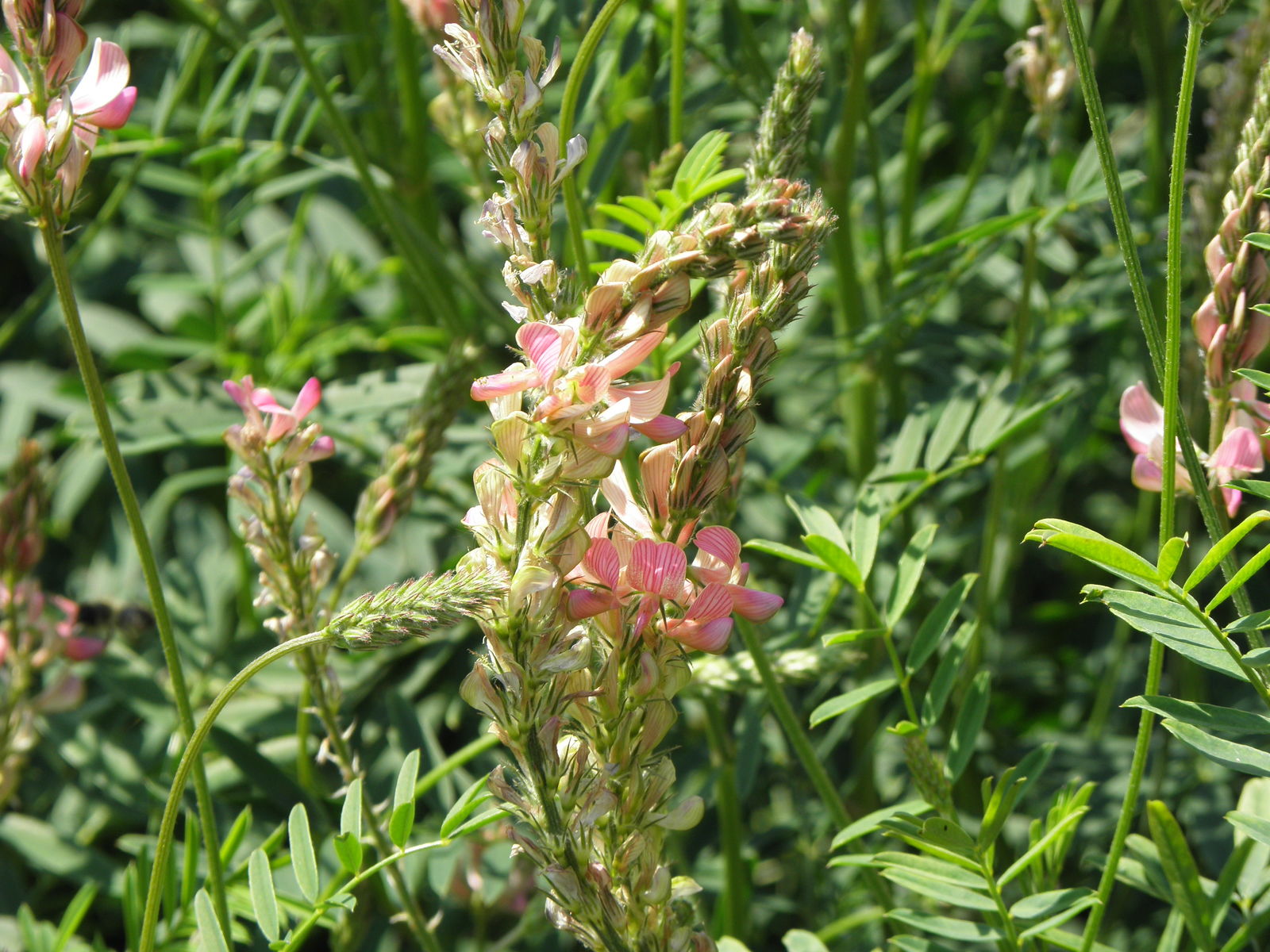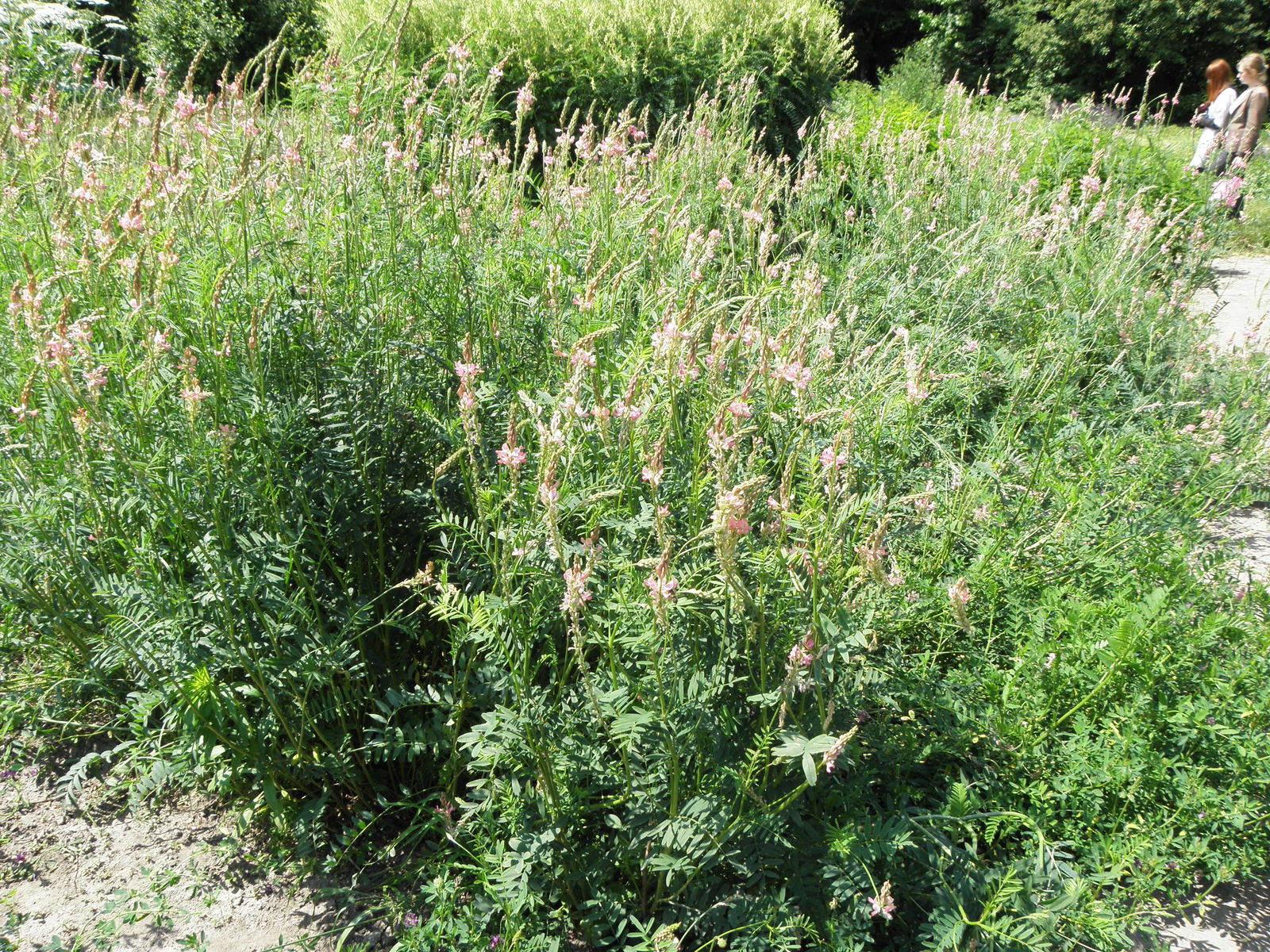Sainfoin
onobrychis viciifolia
Also known as: ["Bockshornklees","Horn clover","False clover"]
Overview
A perennial legume with clover-like leaves and pinkish-white flowers, known for its high protein content and palatability to livestock.
Benefits & Perks
["edible fruits","medicinal use","wildlife attractant (bees, butterflies, birds)","drought tolerant"]
Botanical Classification
| Phylum: | Magnoliophyta |
| Class: | Magnoliopsida |
| Order: | Fabales |
| Family: | Fabaceae |
| Genus: | Onobrychis |
| Botanical Name: | Onobrychis viciifolia |
Plant Characteristics
Basic Information
- Category: Herbs & Weeds
- Suitable Location: garden bed or container in a sunny to partially shaded area
- Suitable For:
- Is Weed: No
- Allergenicity: low
Environmental Needs
- Climate: {"temperatureRange":"5–35°C"}
- Hardiness: {"zones":"4–8"}
- Misting: rarely required
- Drainage: Fast-draining to prevent waterlogging.
- Soil Type: Well-draining loamy soil with added organic matter.
Maintenance Level
- Maintenance Level: low
- Toughness Level: high
- Pruning Frequency: As needed; typically after flowering or in early spring.
- Pruning Intensity: Light to moderate; avoid heavy pruning unless necessary.
Care Details
Ideal Sunlight Coverage:
Full sun (6–8 hours/day); tolerates partial shade in hot climates.
Sunlight Tolerance Tips:
Acclimate gradually to intense sunlight; protect from harsh afternoon sun; adjust placement based on seasonal light changes.
Care Requirements
Care Difficulty
easymoderate
Sunlight
full sun to partial shade
Rotate plant for even light; use sheer curtains in intense sun; avoid direct midday sun indoors.
Watering
every 7–10 days during active growth, reduce in winter
Water thoroughly but infrequently; ensure proper drainage; avoid waterlogging.
Soil
well-drained, loamy soil with moderate fertility
pH: Slightly acidic to neutral (pH 6.0–7.0).
Use a mix of potting soil and perlite; avoid heavy clay soils; ensure good drainage.
Temperature
Prefers 60–75°F (15–24°C); tolerates cooler temperatures but avoids frost.
Protect from frost; avoid extreme heat; maintain moderate temperatures for optimal growth.
Fertilizing
every 4–6 weeks during growing season
Fertilize sparingly; use balanced formulations; stop in dormant periods.
Propagation
Methods
Seed or division; stem cuttings can be used but are less common.
Step-by-Step Propagation Guide
- Prepare medium.
- Sow seeds or take cuttings.
- Provide warmth and humidity.
- Transplant once established.
Best Time: Spring or early summer when the plant is actively growing.
Environment
Warm, humid environment with indirect light; maintain consistent moisture.
Medium
Well-draining seed starting mix or cactus mix with perlite.
Hormone
Not typically required for seeds; rooting hormone may help for cuttings.
Timeline
Seeds germinate in 2–4 weeks; cuttings root in 4–8 weeks.
Tools Needed
Seed trays, pots, rooting hormone (optional), misting spray bottle.
Quick Tips
Use fresh seeds for best germination; maintain consistent moisture; provide warmth for faster rooting.
Pruning & Repotting
Pruning Guide
Method
Trim back dead or overgrown stems; shape lightly to encourage bushier growth.
Pruning Plan
Minimal pruning needed; focus on removing dead or damaged growth to maintain health.
Tools
Pruning shears, clean scissors.
Checklist
Sanitize tools; remove dead/damaged growth; shape lightly; avoid over-pruning.
Repotting Guide
Best Season
Spring, before new growth begins.
Pot Size
Move to a pot one size larger (2–3 inches wider in diameter).
Method
Use fresh well-draining soil; gently tease out roots if pot-bound; ensure good drainage.
Suggestions
Repot every 2–3 years or when roots fill the container; beneficial for container-grown plants.
Checklist
Check root health; use fresh soil; ensure drainage; water after repotting.
Advanced Care Tips
Watering Mastery
Watering Checklist
Check soil moisture; water deeply; ensure drainage; adjust for season.
How to Apply Water Properly
Water at the base of the plant, ensuring moisture reaches the root zone; allow excess water to drain away; water in the morning to reduce evaporation.
Watering Schedule Tips
Water deeply once the top inch of soil is dry; reduce frequency in winter to prevent root rot.
Soil Improvement
Add perlite or sand for drainage; incorporate compost for fertility; ensure good aeration.
Temperature Stress Management
Signs of Temperature Issues
Wilting, yellowing leaves, stunted growth, or bud drop.
Cold Stress
Growth slows or halts; may suffer frost damage if temperatures drop below freezing.
Solution: Provide frost protection in winter; move containers indoors or to a sheltered location.
Hot Stress
Leaves may scorch, wilt, or drop; growth may slow in extreme heat.
Solution: Provide shade during peak heat; increase watering; ensure good air circulation.
Fertilizing Guide
Fertilizing Checklist
Check fertilizer type; dilute correctly; apply during growing season; avoid winter.
Fertilizing Method
Use balanced liquid fertilizer diluted to half strength every 4–6 weeks during growing season; avoid fertilizing in winter.
Common Problems & Solutions
Toxicity Warning
Cats
Non-toxicOnobrychis viciifolia is not known to be toxic to cats. It is generally safe for feline consumption and does not pose any significant health risks.
⚡ Toxic If:
None
Dogs
Non-toxicOnobrychis viciifolia is not known to be toxic to dogs. It is commonly included in forage mixes and is generally safe for canine consumption.
⚡ Toxic If:
None
Humans
Non-toxicOnobrychis viciifolia, commonly known as sainfoin, is generally considered non-toxic to humans. It is often used as a forage crop and is valued for its nutritional benefits and palatability.
⚡ Toxic If:
None
Frequently Asked Questions
Q: Is sainfoin suitable for grazing animals?
A: Yes, it is highly palatable and nutritious for livestock, particularly horses and cattle.
Q: Does sainfoin require much water?
A: No, it is drought-tolerant and thrives in well-drained soils with minimal irrigation.
Q: Can sainfoin be used in herbal medicine?
A: Historically, it has been used for its anti-inflammatory and digestive properties, though modern use is limited.
Quick Reference
| Family: | Fabaceae |
| Care: | easy |
| Light: | full sun to partial shade |
| Water: | every 7–10 days during activ |
Get Expert Care Tips
Download the Plantious app for personalized care reminders and plant identification!
Google Play App Store








